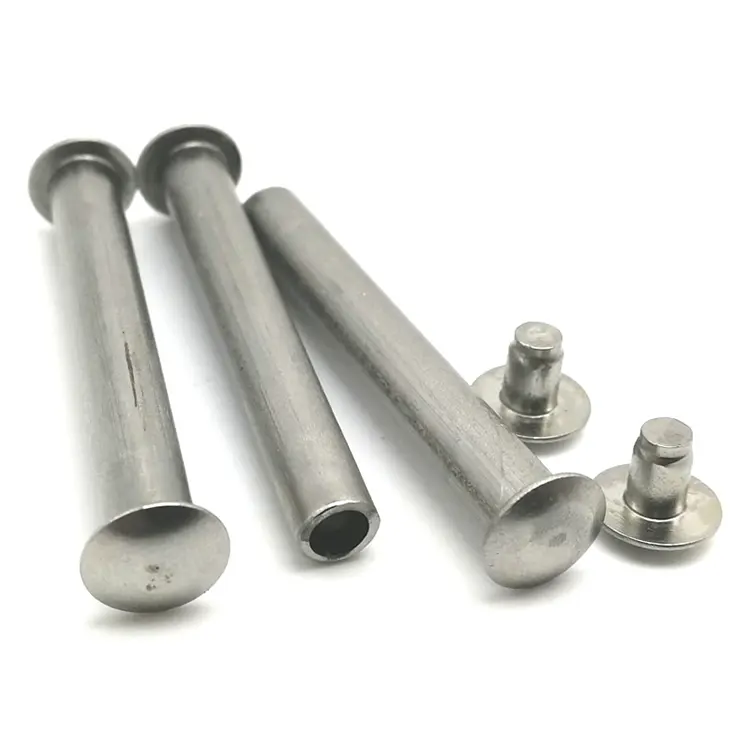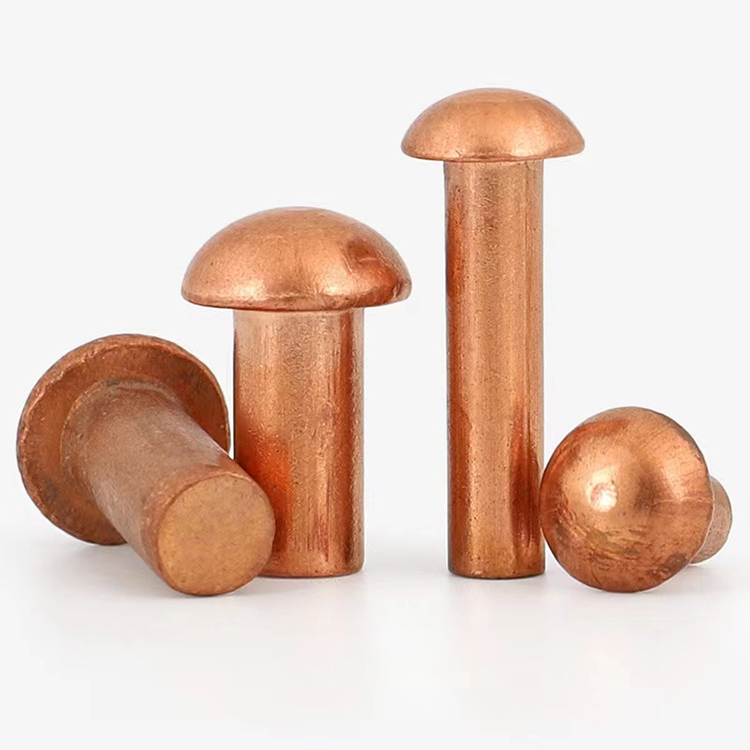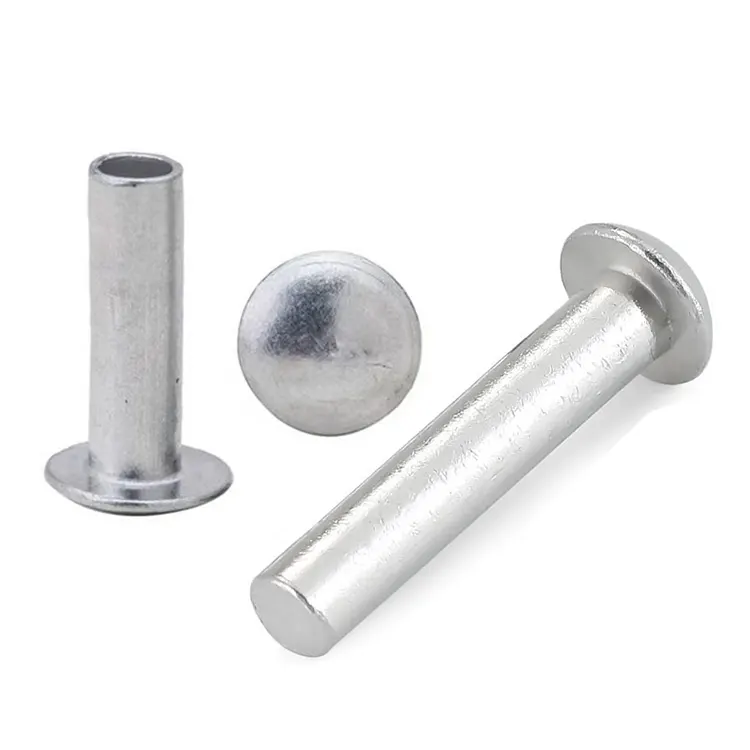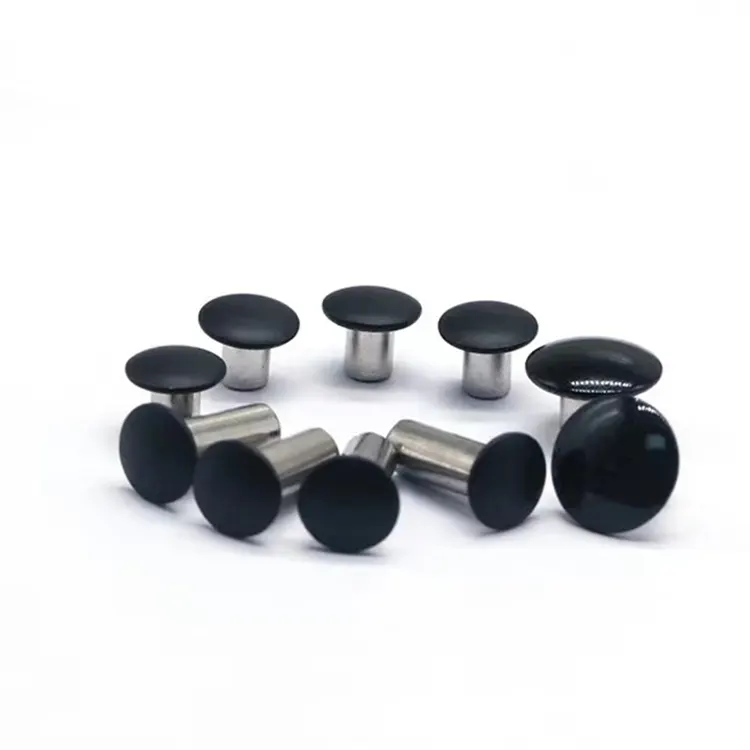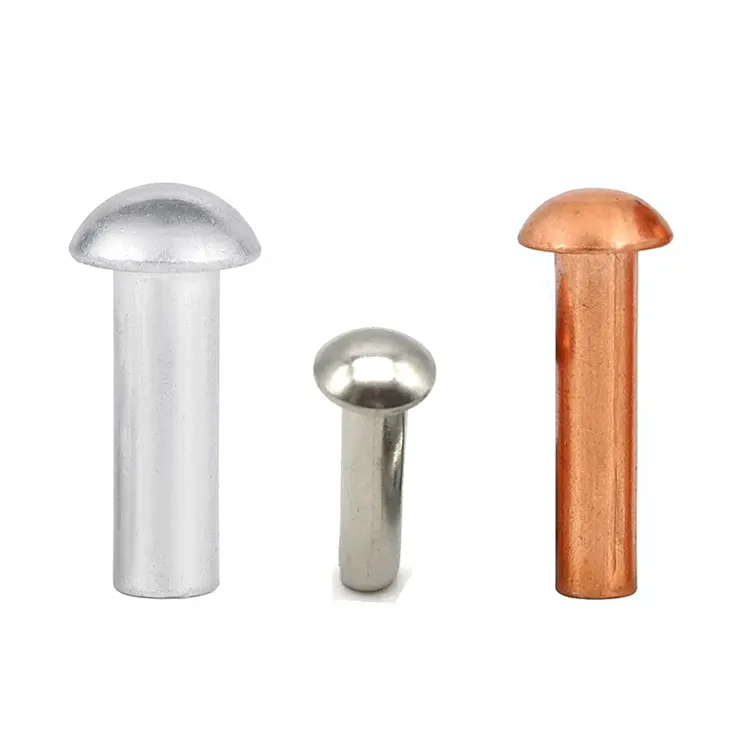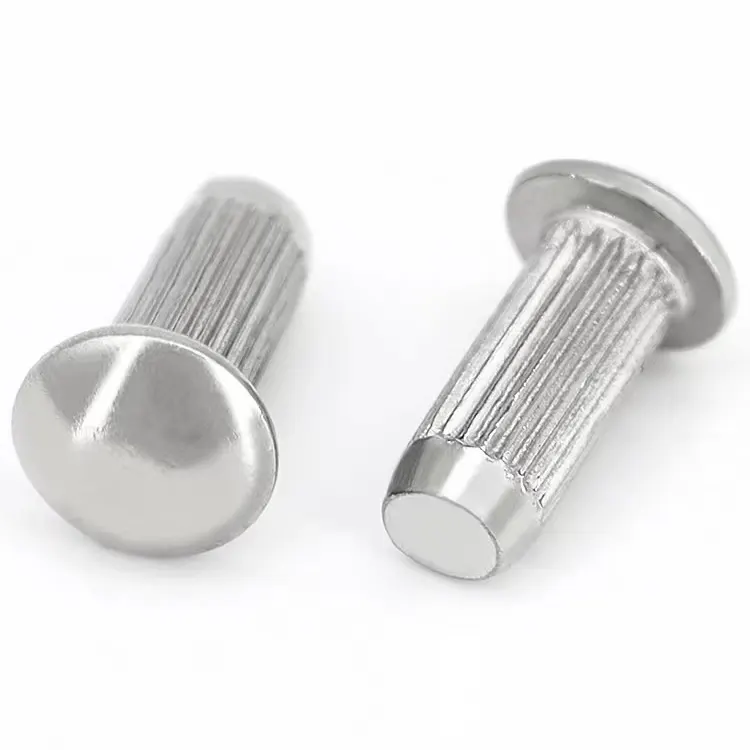Speciális szegecsek
One of Chinese manufacturer of Special Rivets, offering excellent quality at a competitive price, is Notin. Feel free to get in touch.
In the field of mechanical manufacturing and assembly, rivets are a common fastener used to professionally connect two or more parts. According to the degree of standardization, rivets can be divided into two categories: standard rivets and non-standard rivets. The size, shape and material of standard rivets are uniformly specified, while non-standard rivets are customized according to specific needs. The following will introduce the characteristics and applications of non-standard rivets from multiple aspects.
What are non-standard rivets?
Non-standard rivets are also called special rivets. They refer to rivets that do not meet national standards or industry general standards. Their size, material, structure and other parameters are designed and manufactured according to the specific needs of customers. Due to the different connection requirements of different industries and equipment, standard rivets may not meet the requirements of certain special scenarios, so non-standard rivets came into being.
What are the characteristics of special rivets?
(1) Strong customization: Non-standard rivets can be personalized according to factors such as the use environment, stress conditions, and assembly methods to ensure that they perform well in actual applications.
(2) Diverse materials: In addition to common carbon steel and stainless steel, non-standard rivets can also be made of special materials such as aluminum alloy, copper alloy, titanium alloy, etc. to meet different corrosion resistance, strength and weight requirements.
(3) Flexible structure: The structure of non-standard rivets can be adjusted according to needs, such as head shape, stem diameter, length, etc., and can even be designed to be hollow, semi-hollow or other special shapes.
- View as
Pan Head szegecsek
A szegecsfejű szegecsek fémanyagok rögzítésére vagy összekapcsolására használt mechanikai alkatrészek. Széles körben használják az ipari termelésben, a gépgyártásban, az autójavításban és más területeken. A szegecs funkciója az, hogy a szegecscsövet behelyezze a két összeillesztendő fémdarabba. A szegecsfej formája és a csőszakasz összenyomja a szegecset, szoros kapcsolatot hozva létre. A Nuote Metals a Pan Head szegecsek gyártására specializálódott. Több mint 40 hidegvágó gépünk és több ezer szerszámunk van, napi gyártási kapacitásunk akár 10 millió szegecs is. Szívesen fogadunk egyedi megrendeléseket az Ön rajzai és mintái alapján.
Olvass továbbKérdés küldéseFestett szegecsek
A festett fejjel ellátott szegecsek rendkívül korrózióállóak. A jellemzően 15-25 mikron vastag festékréteg hatékonyan elszigeteli őket a nedvességtől és a vegyszerektől. A sópermetes tesztek azt mutatják, hogy a festett szegecsek több mint 500 órán keresztül ellenállnak a rozsdának, háromszor hosszabb ideig, mint a bevonatlan szegecsek. A Nuote Metals az ilyen típusú szegecsekre specializálódott, a kínai Dongguanban vagyunk.
Olvass továbbKérdés küldéseGombafejű szegecsek
A gombafejes szegecs elnevezése megjelenéséről és szerkezeti jellemzőiből ered. A szegecs egyik vége gomba alakú és viszonylag széles, jobb kompressziós felületet és esztétikai hatást biztosít. A félcső alakú gombafejű szegecsek másik végén félig üreges kialakításúak. A telepítés során egy speciális szerszámot használnak az üreges rész kiterjesztésére, hogy biztonságos csatlakozást hozzon létre. Ez a kialakítás lehetővé teszi, hogy a szegecs a beépítés után alkalmazkodjon a különböző anyagvastagságokhoz, miközben megőrzi a szép és esztétikus illesztést. Tömör gombafejű szegecsek is kaphatók, amelyek csavarszegecseléssel gomba alakú fejet alkotnak a farok végén, így esztétikus és biztonságos kapcsolat jön létre.
Olvass továbbKérdés küldéseFérfi női szegecsek
A Nuote Metals a férfi női szegecsek speciális gyártója Kínában. A férfi női szegecsek előnyei az egyszerű telepítés és az alacsony költség. Összehasonlítva más csatlakozási módszerekkel, mint például a hegesztéssel vagy ragasztóval, a női szegecsek nem igényelnek speciális készségeket vagy hosszú kötési időt. Azonban hátrányaik is jelentősek: a csatlakozási szilárdság korlátozott, így nem alkalmas nagy intenzitású vagy vibrációs környezetben. Hosszan tartó használat után meglazulhatnak, rendszeres ellenőrzést igényel.
Olvass továbbKérdés küldéseRecézett szegecsek
A recézett szegecsek általában fejből, szárból és farokból állnak. A szár átlós vagy egyenes recézett mintázattal, megmunkált, dombornyomott textúrával rendelkezik, amely jobb fogást biztosít a szerelés során, és megakadályozza a szerszám elcsúszását. A szár hengeres, hossza és átmérője az alkalmazástól függően változik. Az általános méretek 3 mm és 8 mm közötti átmérőjűek és 5 mm és 20 mm közötti hosszúságúak. A farok is tartalmazhat meneteket vagy hornyokat az anyákkal vagy más rögzítőelemekkel való párosításhoz.
Olvass továbbKérdés küldéseVas kerek fejű szegecsek
A vas kerek fejű szegecsek az ipari gyártásban és a mindennapi életben széles körben használt rögzítőelemek. Egyedülálló kialakításuk és kiváló teljesítményük miatt számos területen a legjobb választás. A Nuote Metals a vas kerek fejű szegecsek gyártására specializálódott. Szegecseink méretei szigorúan betartják a megrendelői rajzokon megadott tűréseket. Minden folyamatot minőségellenőrzési ciklusnak vetnek alá, hogy biztosítsák a végtermék minőségét. Több tucat hidegfejű gépünk van, amelyek napi teljesítménye több tízmillió szegecs.
Olvass továbbKérdés küldéseWhat are the characteristics of special rivets?
(1) Strong customization: Non-standard rivets can be personalized according to factors such as the use environment, stress conditions, and assembly methods to ensure that they perform well in actual applications.
(2) Diverse materials: In addition to common carbon steel and stainless steel, non-standard rivets can also be made of special materials such as aluminum alloy, copper alloy, titanium alloy, etc. to meet different corrosion resistance, strength and weight requirements.
(3) Flexible structure: The structure of non-standard rivets can be adjusted according to needs, such as head shape, stem diameter, length, etc., and can even be designed to be hollow, semi-hollow or other special shapes.
Manufacturing process of special rivets
The manufacturing of non-standard rivets involves multiple links, mainly including:
1.Material selection: Select suitable metal or alloy materials according to the use environment. 2. 2.Cold heading or hot heading: Use pressure processing to form the basic shape of the rivet into the metal blank.
3.Turning or milling: Fine-process the details such as the head and stem of the rivet to ensure dimensional accuracy.
4.Surface treatment: Such as galvanizing, nickel plating, anodizing, etc. to improve corrosion resistance or aesthetics.
Advantages and limitations of special rivets
(1) Advantages: They can meet special needs, improve assembly efficiency and connection reliability, and are suitable for complex or high-demand application scenarios.
(2) Limitations: Since they are customized products, the production cost is high, the delivery cycle is relatively long, and customers are required to provide detailed technical parameters.
How to choose suitable special rivets?
(1) Clarify the needs: Determine the key parameters such as the rivet's operating environment, stress conditions, and corrosion resistance requirements.
(2) Material matching: Select the appropriate material based on actual needs to avoid over-design that leads to increased costs.
(3) Communicate with suppliers: Provide detailed technical drawings or samples to ensure that the non-standard rivets produced meet expectations.
What are the main applications of special rivets?
(1) Aerospace: Aircraft, rockets and other equipment have extremely high requirements for the weight, strength and high-temperature resistance of fasteners. Non-standard rivets can be optimized according to specific needs.
(2) Automobile manufacturing: Certain special models or high-performance vehicles may require non-standard rivets to meet the needs of lightweight or high-strength connections.
(3) Electronic equipment: Precision instruments or small electronic equipment may require micro non-standard rivets to ensure the stability and compactness of the connection.
(4) Construction industry: Some special-structured buildings or decoration projects may use non-standard rivets to meet specific installation requirements.
Market status of special rivets
With the advancement of industrial technology, more and more industries have begun to use non-standard rivets to optimize product design. At present, non-standard rivet manufacturers are mainly concentrated in the Yangtze River Delta and Pearl River Delta regions in China, and can provide a variety of customized services. Due to the high unit price of non-standard rivets, its market size is relatively small, but the demand in the high-end manufacturing field continues to grow.
Future development trends
(1) Lightweight design: With the improvement of energy-saving and environmental protection requirements, non-standard rivets made of lightweight materials will be more popular.
(2) Intelligent production: Automated equipment and digital management will further improve the production efficiency and quality stability of non-standard rivets.
(3) Wider application: Emerging industries such as new energy and robotics may drive the growth of demand for non-standard rivets.
In summary, special rivets are highly customized fasteners that can meet special needs that standard rivets cannot meet. Although its production cost is relatively high, it plays an irreplaceable role in industries such as aerospace, automobiles, and electronics. In the future, with the advancement of manufacturing technology, the application scope of non-standard rivets is expected to further expand.

